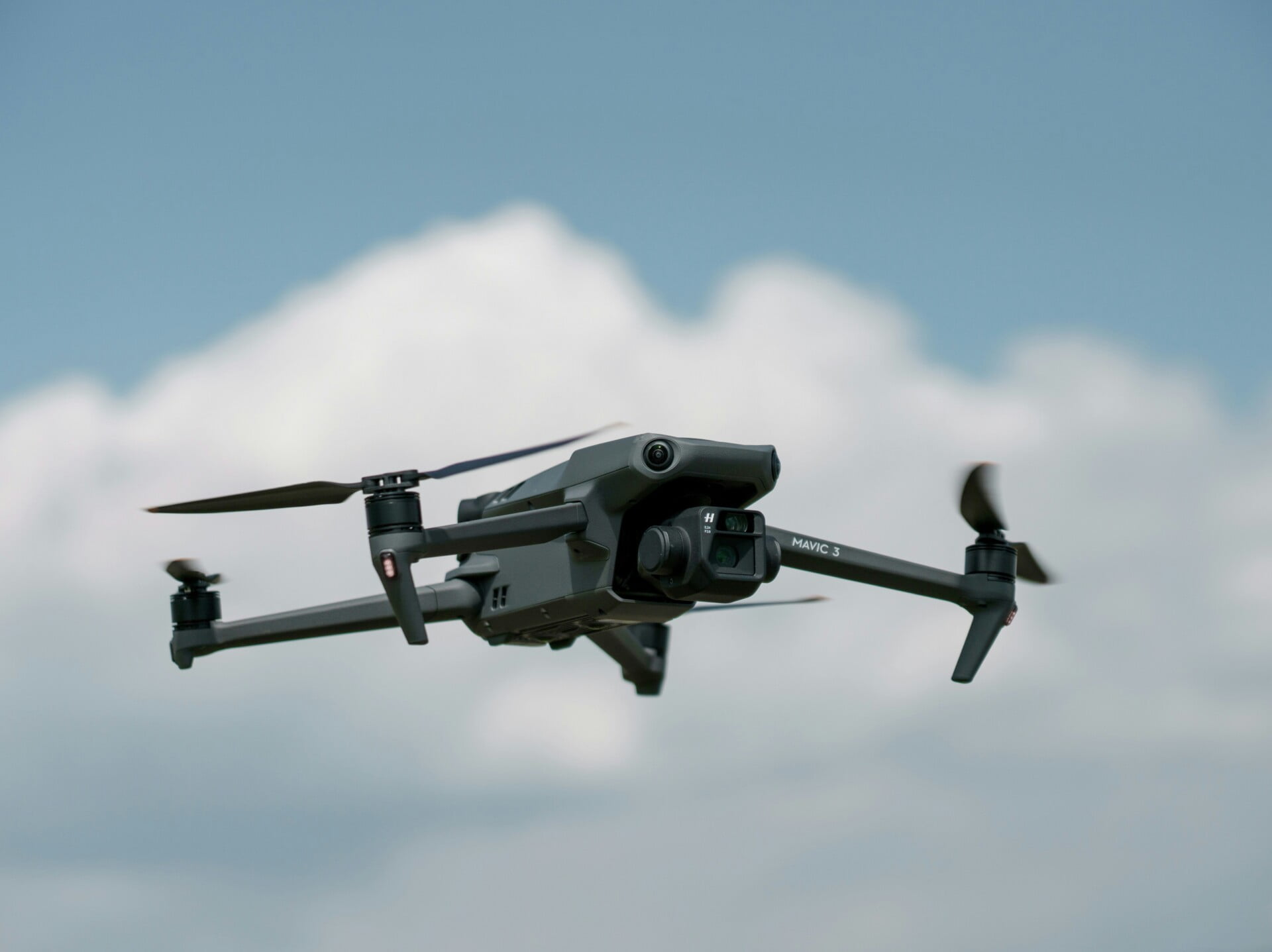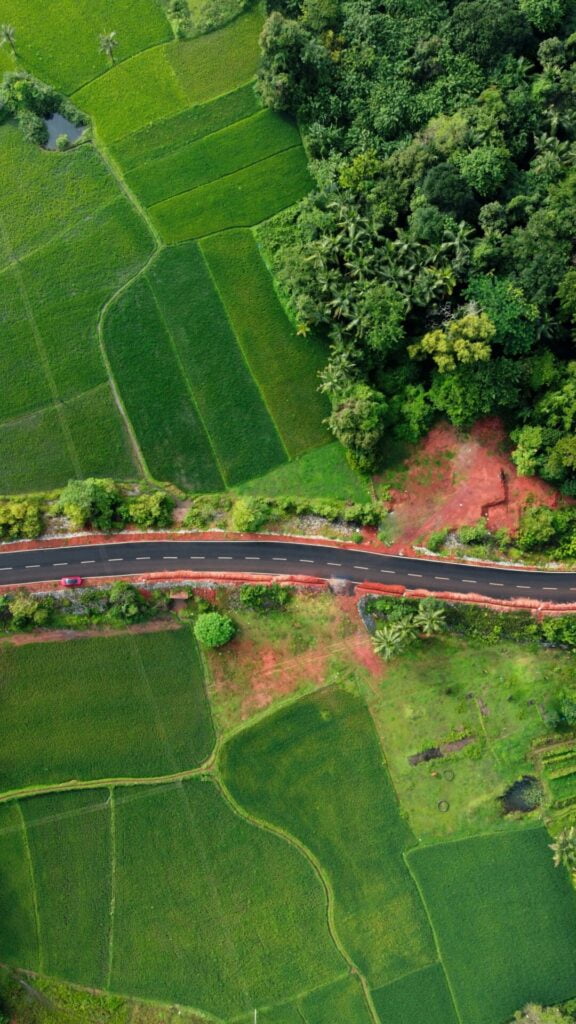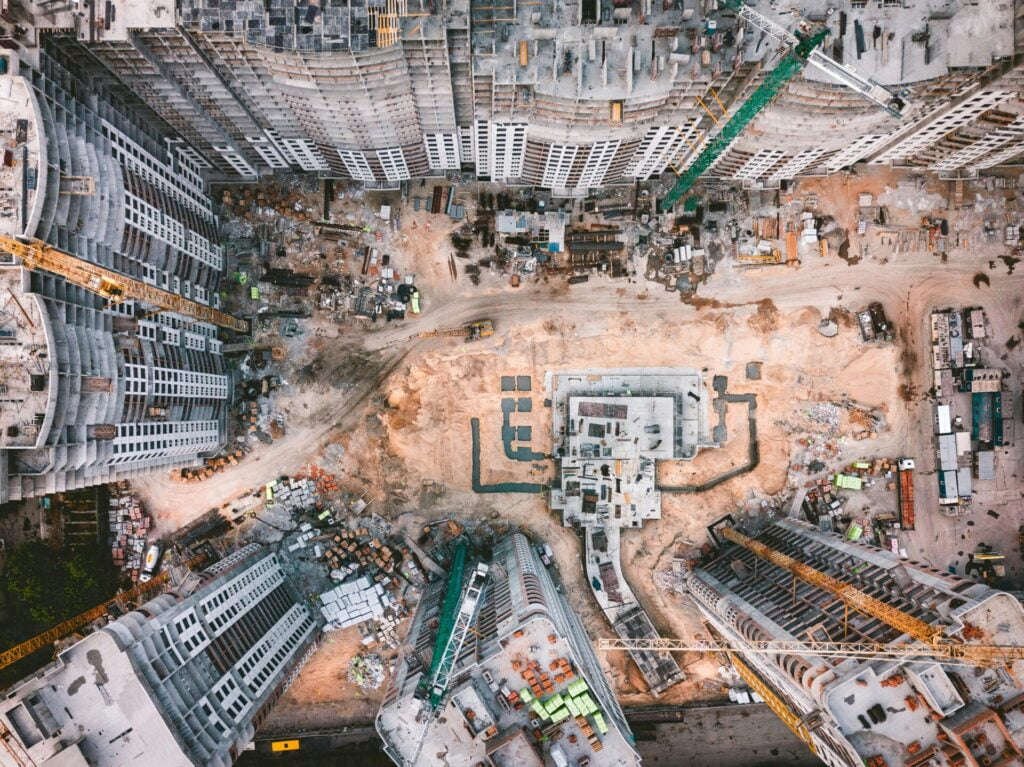DJI Mavic 3 Introduction
The DJI Mavic 3 is a groundbreaking drone that pushes the boundaries of aerial technology, especially in terms of its exceptional flight range and innovative thermal camera features. With advancements that redefine possibilities in photography and imaging, the Mavic 3 offers unparalleled capabilities for aerial enthusiasts, professionals, and industries seeking cutting-edge solutions. In this comprehensive guide, we will delve into the remarkable flight range capabilities of the Mavic 3 along with its state-of-the-art thermal camera technology, exploring the endless possibilities these features unlock for capturing stunning visuals and harnessing thermal imaging in diverse applications. Let’s embark on a journey to unveil the extraordinary capabilities of the DJI Mavic 3.

Readers like you help support TIPDIGITECH. When you make a purchase using links on our site, we may earn an affiliate commission. Read More.
Exploring DJI Mavic 3’s Flight Range
Overview of DJI Mavic 3’s Flight Capabilities
The DJI Mavic 3 is an exceptional drone, known for its impressive flight range. It’s a top choice for aerial enthusiasts and professionals. With advanced technology and precision engineering, it offers an unparalleled flying experience. Users can capture stunning aerial footage from greater distances than ever before.
Key Features Enhancing Flight Performance
One of the standout features of the DJI Mavic 3 is its extended flight range. It can reach up to 15 kilometres under optimal conditions. This remarkable range gives users the freedom to explore vast landscapes and capture breathtaking views without limitations. Additionally, the drone is equipped with enhanced obstacle sensors and intelligent flight modes to ensure safe and smooth flying operations.
Innovations in Battery Life and Efficiency
The Mavic 3 boasts improved battery life, allowing for longer flight durations and extended exploration opportunities. With a high-capacity battery, users can enjoy extended flight times, maximizing their aerial photography and videography sessions. The drone’s efficient power management system further enhances its overall performance, making it a reliable companion for aerial adventures.
Testimonials from Aerial Enthusiasts
According to a renowned drone technology reviewer, “The DJI Mavic 3 sets a new benchmark in the drone industry. It offers exceptional flight capabilities and cutting-edge features.” Many aerial enthusiasts praise the drone for its stability, agility, and impressive range. It’s a preferred choice for capturing dynamic and immersive aerial footage.
The DJI Mavic 3’s flight range is a testament to its advanced technology and innovation, setting a new standard for aerial drones in terms of performance and reliability. whether exploring vast landscapes or capturing cinematic aerial shots, the Mavic 3’s flight capabilities elevate the aerial photography experience to new heights.
Understanding DJI Mavic 3’s Thermal Camera
Evolution of Thermal Imaging Technology
Thermal cameras have revolutionized the world of aerial photography by capturing heat signatures invisible to the naked eye. With the DJI Mavic 3’s thermal camera, users can now capture detailed thermal images and videos, providing valuable insights across various industries. The evolution of thermal imaging technology has enhanced the capabilities of drones, making them indispensable tools for tasks that require precision and efficiency.
Features of DJI Mavic 3’s Thermal Camera
The DJI Mavic 3’s thermal camera boasts cutting-edge features that set it apart in the market. Equipped with high-resolution thermal sensors and advanced image processing capabilities, this camera delivers crisp and clear thermal images for accurate analysis. Additionally, the camera’s adjustable temperature scales and colour palettes allow users to customize the visual representation of thermal data according to their specific needs.
Applications in Various Industries
The thermal camera of DJI Mavic 3 opens up a world of possibilities across a wide range of industries. In agriculture, it can be used to monitor crop health, detect irrigation issues, and assess plant stress. For search and rescue operations, the thermal camera aids in locating missing persons or identifying sources of heat in emergencies. In building inspections, it helps identify energy inefficiencies and potential hazards. The possibilities are endless with the versatile capabilities of DJI Mavic 3’s thermal camera.
Advantages of Thermal Imaging
Thermal imaging provides a unique perspective by visualizing temperature variations, revealing issues that are invisible to the human eye. As stated by FLIR, a leading thermal imaging company, “Thermal imaging cameras detect radiation in the infrared range of the electromagnetic spectrum and produce images of that radiation.” This technology proves invaluable in numerous fields, from building diagnostics to wildlife monitoring, showcasing the importance of thermal cameras in modern drone technology.
The thermal camera of DJI Mavic 3 represents a significant advancement in aerial photography and thermal imaging capabilities. its precision, versatility, and adaptability make it a game-changer in various industries, heralding a new era of innovation and efficiency in drone technology.
Benefits of Thermal Imaging in Drones
Enhanced Search and Rescue Operations
Thermal imaging in drones enhances search and rescue operations by detecting heat signatures, making it easier to locate missing persons or survivors in various terrains. The ability to see thermal variances enables rescuers to act swiftly, even in low-visibility conditions such as dense forests or night-time operations.
Precision Agriculture and Crop Monitoring
Thermal imaging technology in drones revolutionizes agriculture by providing farmers with essential data for crop management. By detecting temperature variations, farmers can identify areas of pest infestation, irrigation issues, or crop diseases before they are visible to the naked eye. This proactive approach helps optimize crop yields and reduce resource wastage.
Building Inspections and Infrastructure Maintenance
Utilizing drones equipped with thermal cameras offers a non-invasive method for building inspections and infrastructure maintenance. The thermal images can reveal hidden structural defects, water leaks, or faulty electrical connections without the need for physical intervention. This preventive maintenance approach enhances safety protocols and reduces the risk of unexpected failures.
Wildlife Conservation and Anti-Poaching Efforts
In the realm of wildlife conservation, thermal imaging in drones plays a vital role in monitoring and protecting endangered species. Conservationists can track animals, detect poachers, and identify nocturnal wildlife activities without disturbing the natural habitat. The real-time data provided by thermal imaging aids in creating effective conservation strategies and combating illegal wildlife trade.
By incorporating thermal imaging capabilities into drones like the DJI Mavic 3, users can harness these benefits across various sectors, from emergency response missions to environmental preservation efforts. The advanced technology expands the possibilities of drone applications and ensures a safer, more efficient approach to diverse tasks.
Comparison with Previous DJI Models
Advancements in technology have propelled the drone industry to new heights, with each iteration bringing significant improvements in features and performance. When comparing the DJI Mavic 3 to its predecessors, such as the Mavic 2 Pro and Mavic Air 2, several key differences emerge.
Flight Performance:
One of the standout upgrades in the DJI Mavic 3 is its enhanced flight performance. With an extended flight range of up to 15 kilometres, the Mavic 3 surpasses the Mavic 2 Pro’s range by a significant margin. Additionally, the improved battery life allows for longer flight times, giving users more time in the air to capture stunning aerial footage.
Thermal Imaging Capabilities:
Unlike previous models, the DJI Mavic 3 comes equipped with a state-of-the-art thermal camera, offering users the ability to capture thermal imagery with unparalleled detail. This feature sets the Mavic 3 apart from its predecessors, making it a valuable tool for various applications, including search and rescue missions, building inspections, and wildlife monitoring.
Camera Quality:
In terms of camera quality, the Mavic 3 raises the bar with its upgraded Hasselblad camera system. Boasting a larger sensor size and improved image processing capabilities, the Mavic 3 delivers sharper and more vibrant images compared to earlier models. The inclusion of advanced camera features, such as HDR video and enhanced low-light performance, further enhances the drone’s imaging capabilities.
Intelligent Flight Modes:
The DJI Mavic 3 introduces new intelligent flight modes that elevate the flying experience to new heights. Features like ActiveTrack 5.0 and Point of Interest 4.0 enhance the drone’s autonomous flying capabilities, making it easier for users to capture dynamic shots with precision and ease. These improvements make the Mavic 3 a versatile tool for both professional photographers and enthusiasts alike.
The DJI Mavic 3 represents a significant leap forward in drone technology, offering users unparalleled flight performance, thermal imaging capabilities, camera quality, and intelligent flight modes. by surpassing the capabilities of its predecessors, the Mavic 3 sets a new standard for aerial photography and thermal imaging drones.
Applications of DJI Mavic 3 in Various Industries
Agriculture

The DJI Mavic 3’s advanced capabilities make it a valuable tool in the agricultural sector. With its high-resolution thermal camera, farmers can monitor crop health, detect irrigation issues, and assess vegetation stress levels. By utilizing thermal imaging technology, agricultural professionals can make informed decisions to optimize crop yield and efficiency.
Construction
In the construction industry, the DJI Mavic 3 plays a crucial role in aerial surveying, mapping, and monitoring project progress. The drone’s long flight range allows for comprehensive site inspections and the capture of detailed aerial footage. The thermal camera feature enables construction teams to identify structural issues, monitor temperature differentials, and enhance safety protocols on job sites.

Search and Rescue
The DJI Mavic 3’s thermal imaging capabilities make it an invaluable asset in search and rescue operations. With the ability to detect heat signatures, the drone aids in locating missing persons or survivors in challenging terrains. Its exceptional flight range ensures extended search missions, providing crucial support to rescue teams in time-sensitive situations.
Environmental Conservation
Environmentalists utilize DJI Mavic 3 drones equipped with thermal cameras to monitor wildlife, track animal movements, and conduct environmental surveys. The drone’s ability to capture thermal data aids in wildlife protection efforts, habitat monitoring, and anti-poaching initiatives. By leveraging this technology, conservationists can enhance their research and conservation efforts effectively.
Infrastructure Inspection
In the infrastructure sector, the DJI Mavic 3 serves as a reliable tool for inspecting bridges, pipelines, and utilities. Its thermal imaging feature enables engineers to identify structural defects, leaks, and insulation problems with precision. The drone’s long flight range and thermal capabilities provide accurate data for maintenance planning and infrastructure assessments.
The versatile applications of the DJI Mavic 3 in various industries highlight its significance as a cutting-edge drone with immense potential to revolutionize operations and enhance efficiency across diverse sectors.
Frequently Asked Questions (FAQs)
1. Is the flight range of DJI Mavic 3 significant for aerial photography and videography?
Yes, the DJI Mavic 3 boasts an impressive flight range of up to 15 kilometres, providing ample coverage for capturing stunning aerial shots.
2. How does the thermal camera feature of DJI Mavic 3 enhance its capabilities?
The thermal camera on the DJI Mavic 3 enables users to detect heat signatures, making it ideal for applications such as search and rescue missions, building inspections, and wildlife monitoring.
3. Can the DJI Mavic 3 transmit live thermal imaging footage to a compatible device?
Yes, the DJI Mavic 3 can stream live thermal imaging footage to a compatible device, allowing real-time monitoring and analysis of thermal data.
4. What sets the DJI Mavic 3 apart from previous drone models in terms of flight performance?
The DJI Mavic 3 features upgraded propulsion systems and improved aerodynamics, resulting in enhanced stability, efficiency, and overall flight performance.
5. In which industries can the DJI Mavic 3 with thermal imaging capabilities make a significant impact?
The DJI Mavic 3’s thermal imaging capabilities are beneficial for industries such as agriculture, infrastructure inspection, public safety, and environmental monitoring, revolutionizing how tasks are performed in these sectors.
Readers like you help support TIPDIGITECH. When you make a purchase using links on our site, we may earn an affiliate commission. Read More.
Conclusion
The DJI Mavic 3 emerges as a game-changer in the realm of drones, combining exceptional flight range with state-of-the-art thermal imaging capabilities. with its innovative features and advanced technology, this drone opens up a world of possibilities for aerial photography, surveillance, and industrial applications. the impressive performance and versatility of the DJI Mavic 3 make it a top choice for professionals and enthusiasts seeking cutting-edge drone technology. experience the future of aerial exploration and imaging with the DJI Mavic 3.
- Exceptional Image and Video Quality: The Mavic 3 features a dual-camera system including a 4/3 CMOS Hasselblad sensor for outstanding image quality, capable of capturing 20MP photos and 5.1K video.
- Advanced Flight Time: With up to 46 minutes of flight time per battery, the Mavic 3 stands out for extended operations.
- Improved Obstacle Sensing: Enhanced omnidirectional obstacle sensing provides greater safety during flight, making it easier to navigate challenging environments.
- Superb Stabilization: The three-axis gimbal offers remarkable stabilization for smooth footage even in windy conditions.
- Powerful Transmission System: The OcuSync 3.0 technology ensures a stable, long-distance (up to 15km) transmission with minimal interference.
- Advanced Flight Modes: Features like ActiveTrack 5.0, Point of Interest 3.0, and QuickShots enable creative and automated filming.
- Portable Design: The foldable design makes it highly portable, and ideal for adventurers and travelers.
- High Dynamic Range: Supports HDR video, enhancing the quality of footage with more vivid colours and contrasts.




